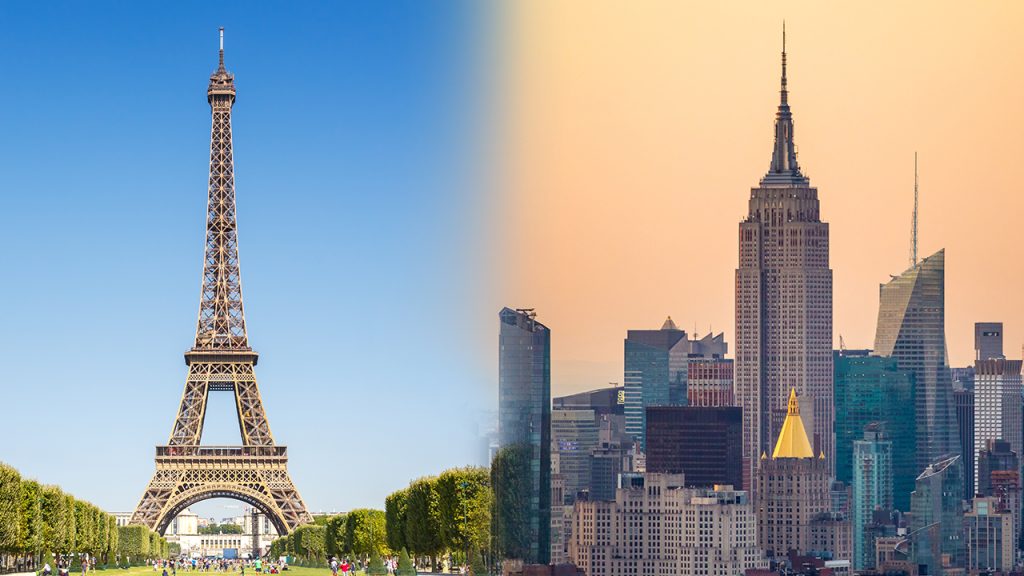This blog post will discuss the Eiffel Tower vs. the Empire State Building. Nobody could identify the Eiffel Tower or the Empire State Building without them. In 1889, Paris’s iconic Eiffel Tower was completed. Gustave Eiffel designed and constructed it to open the 1889 World’s Fair.
Eiffel Tower vs. Empire State Building: Height
Typical buildings are 30 to 60 feet tall, but the Eiffel Tower is 984 feet tall. The Eiffel Tower is more than 16 times higher than typical buildings. Including its antenna, the height of the Empire State Building is 1,454 feet, whereas its roof height is just 1,250 feet.
The rise and fall of the Empire State Building and the Eiffel Tower.
Tower of Paris:
The final height of the Eiffel Tower, when it was finished in 1889, was 324 meters.
During its development, the Eiffel Tower overtook the Washington Monument to become the highest building in the world.
Iconic Empire State
The Empire State Building, built between 1931 and 1932, has a 102nd floor of 1,250 feet tall and a total height of 1,453 feet 8 inches (including the 203-foot antenna).
The Empire State Building formerly surpassed the Eiffel Tower and the Chrysler Building as New York’s tallest structures.
From its completion in 1931 until the World Trade Center Tower was constructed in 1970, the Empire State Structure held the title of the tallest structure in the world.
The value of height in the planning and development of tall buildings.
Skyscrapers depend heavily on their vertical dimensions:
The goal of skyscraper architecture should be to provide livability even in tall structures. Apart from providing amenities and a suitable atmosphere for its residents, it must withstand the forces of wind, earthquakes, and fire.
Skyscrapers have different effects on the surrounding urban landscape depending on their height.
There are limits to the height that skyscrapers can reach due to cost and government regulation. Tall buildings are more challenging to construct and maintain economically and are more susceptible to damage from wind and other lateral stresses…
Eiffel Tower vs. Empire State Building: Design
Tower of Paris:
Gustave Eiffel built the Eiffel Tower out of wrought iron latticework for the 1889 Paris Exposition Universelle. The tower is 324 meters tall and has a square base with 125-meter sides. The Eiffel Tower is iconic for its one-of-a-kind look, which merges Art Nouveau and industrial styles. At its highest point, the Eiffel Tower has a tiny observation tower, two more platforms, and four buildings that converge at the first level.
Legendary imperial nation
That year, the public was given its first look at the Empire State Building, located in New York City, an Art Deco skyscraper built by Shreve, Harmon, and Lamb.
The whole structure, antenna, and everything is tall, 1,454 feet (443.2 m), while the roof is 1,250 feet (380 m) high.
The distinctive architectural style of the Building includes geometric shapes, setbacks, and iconic embellishments like eagles and gargoyles.
The terraces and decks are made of concrete, steel, and limestone, while the framework and core are steel.
Due to their construction in different cultural and technical periods, the Eiffel Tower and the Empire State Building display fundamentally different architectural styles, materials, and structural elements. The iron latticework of the Eiffel Tower is a synthesis of Art Nouveau and industrial design. The Empire State Building and other Art Deco structures stand out for their geometric forms and ornamentation.
History
The Eiffel Tower
The Eiffel Tower represents Paris and all of France.
Gustave Eiffel conceived and oversaw the construction of the Eiffel Tower at the Paris Exposition Universelle in 1889.
When the Eiffel Tower was first proposed as a temporary building, it needed to be received more.
Using wrought iron and a novel lattice design, the tower’s construction was a technical feat for its day.
The Eiffel Tower was higher than the Washington Monument when it was initially constructed.
The Empire State Building
The Empire State Building is a 102-story Art Deco landmark in Midtown Manhattan. Here’s a quick rundown of the building’s background:
Shreve, Harmon, and Lamb planned and built this building in ’30 and ’31.
They built the tower during the Great Depression to showcase American creativity and technical progress.
Millions of people flock to New York yearly because of the city’s iconic status as a representation of New York and the United States.
Cultural Impact
The Eiffel Tower and the Empire State Building have enormously contributed to culture as monuments, tourist destinations, and icons of their respective countries. Some essentials are as follows:
Tower of Eiffel:
The Eiffel Tower is a global icon, representing Paris and France to people all over the globe.
The tower is one of the world’s top tourist destinations, visited by millions yearly.
The Eiffel Tower has become ubiquitous in popular culture after being depicted in many media.
Modern architecture and engineering may be traced to the tower’s design and construction.
The Iconic Empire State
This Building symbolizes New York City and the United States.
Approximately one billion people worldwide visit the landmark annually.
This Building has become recognizable all around the world as a consequence of its frequent depiction in popular culture.
Contrast the cultural significance of the two structures in different contexts.
Art:
The Eiffel Tower has become a cultural icon in many works of art celebrating Paris.
Several artists have represented the Empire State Building, becoming a cultural symbol.
Inspired by the structures’ scale and significance, artists have produced pieces that give them credit.
Literature:
Several books have been published about the Eiffel Tower.
Many literary works have included descriptions of or references to the Empire State Building, including The Great Gatsby by F. Scott Fitzgerald and The Fountainhead by Ayn Rand.
Writers have used both buildings to symbolize modernity, development, and national identity.
Films:
The Eiffel Tower has appeared in several films, from Midnight in Paris by Woody Allen to Inception by Christopher Nolan.
